Latest News in
Plastic surgery and aesthetic medicine
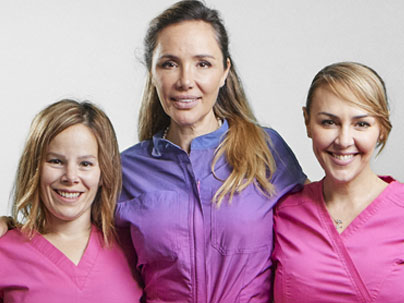
Mesotherapy Explained
Published on September 23, 2025 by Victoria Wood
Non-invasive Skin Rejuvenation - What is Mesotherapy? A Guide to Skin Rejuvenation at Ocean Clinic Marbella. Mesotherapy is a non-surgical cosmetic treatment that delivers vitamins, enzymes, hyaluronic acid, and other active ingredients […]
Filed under: anti-aging face FAQ

How to Get Rid of Sagging Arms
Published on September 19, 2025 by Victoria Wood
For many people, the upper arms become an aesthetic concern over time. At Ocean Clinic Marbella, the procedure is performed as part of a personalised surgical plan that aims to restore balance to the arms […]
Filed under: body contouring arm lift

How to Treat Spider Veins
Published on July 13, 2025 by Victoria Wood
A Closer Look at Sclerotherapy at Ocean Clinic Marbella. Sclerotherapy offers a reliable, proven solution with minimal interruption to your routine. Performed by experienced hands, the results are not only visible but confidence-boosting […]
Filed under: anti-aging treatments FAQ

Considering an Eyelid Lift
Published on June 14, 2025 by Victoria Wood
An eyelid lift, or blepharoplasty, is one of the most effective surgical procedures for facial rejuvenation. Often sought by those experiencing sagging eyelids, under-eye bags, or puffiness, this surgery restores a more youthful and […]
Filed under: face surgery blepharoplasty FAQ

Minimally Invasive Neck Lift
Published on May 31, 2025 by Victoria Wood
Minimally Invasive Neck Lift Procedures: Enhancing Neck Contours with Precision. In recent years, there has been a significant increase in the demand for minimally invasive neck lift procedures […]
Filed under: face face surgery anti-aging

Nano Fat Grafting
Published on May 19, 2025 by Victoria Wood
Rejuvenate your face, the natural way! Nanofat Transfer - The Natural Approach to Facial Rejuvenation. Natural and regenerative results with minimal invasiveness […]
Filed under: anti-aging face

Lower Facelift
Published on May 5, 2025 by Victoria Wood
As we age, the lower face and neck are often among the first areas to show visible signs of ageing. Sagging jowls, deep marionette lines […]
Filed under: face surgery anti-aging face

Body Dysmorphic Disorder
Published on April 18, 2025 by Victoria Wood
Plastic surgeons are in a unique position to identify signs of BDD. By recognizing the typical behaviors and concerns associated with the disorder, surgeons can take the first step in providing appropriate support […]
Filed under: patients experience plastic surgeon

Modern Rhinoplasty
Published on March 5, 2025 by Victoria Wood
Rhinoplasty Options at Ocean Clinic Marbella. Modern rhinoplasty procedures offer a comprehensive range of options tailored to individual needs […]
Filed under: face surgery rhinoplasty
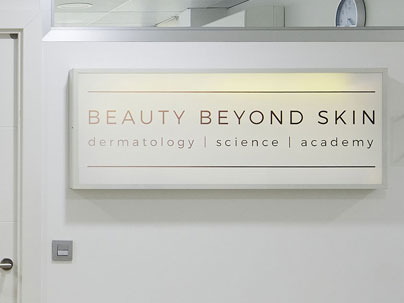
3D HIFU - Top Non-Surgical Treatment
Published on February 27, 2025 by Victoria Wood
The top non-surgical lifting treatment. High-Intensity Focused Ultrasound an advanced non-invasive skincare treatment designed to lift, tighten, and rejuvenate skin without the need for surgery […]
Filed under: anti-aging ultherapy FAQ
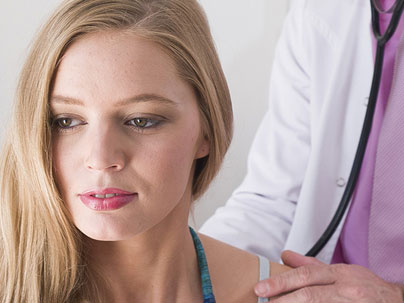
The Aesthetic Industry
Published on February 14, 2025 by Victoria Wood
Did a specialist’s ten year prediction come true? A Ten Year Time Capsule - 2016 Predictions vs 2026 Reality […]
Filed under: patients experience

Biostimulator Injections
Published on January 10, 2025 by Ocean Clinic
What is the role of this new trend in aesthetics? Biostimulators are a breakthrough in aesthetic medicine. Biocompatible synthetic stimulants are injected beneath the surface of the skin and serve to restore volume […]
Filed under: anti-aging injectables treatments FAQ

Why Winter is Ideal for Plastic Surgery
Published on January 8, 2025 by Victoria Wood
Top winter cosmetic procedures 2025. Winter’s colder months present an opportune time for individuals considering plastic surgery. the most popular plastic surgery procedures during winter […]
Filed under: plastic surgery treatments

Why Summer is Ideal for Anti-Aging Treatments
Published on January 6, 2025 by Victoria Wood
The summer’s warmth and vibrancy encourage people to rejuvenate their appearance and boost their confidence. Top non-surgical treatments to consider during the summer of 2025 […]
Filed under: anti-aging treatments

Why Summer is Ideal for Plastic Surgery
Published on January 3, 2025 by Victoria Wood
The summer’s warmth and vibrancy encourage people to rejuvenate their appearance and boost their confidence. Top plastic surgery procedures to consider during the summer of 2025 […]
Filed under: plastic surgery

Medical Tourism Dos and Don’ts
Published on June 3, 2024 by Victoria Wood
The Importance of Post-Procedure Care and Choosing the Right Clinic. Medical tourism has gained significant traction, especially within cosmetic surgery […]
Filed under: patients experience marbella aftercare

Hyaluronic Acid (HA) Body Fillers
Published on May 21, 2024 by Victoria Wood
Hyaluronic acid (HA) body fillers have emerged as a highly effective non-surgical method for sculpting and enhancing various body features […]
Filed under: anti-aging treatments body

Artificial Intelligence and Aesthetic Medicine
Published on May 8, 2024 by Victoria Wood
Impact of AI on Aesthetic Medicine. Digital Health Tool for Objective Facial Analysis. AI’s Assessment Process and Outcome […]
Filed under: anti-aging face education

Brow lift - Forehead lift
Published on April 29, 2024 by Victoria Wood
Surgical procedures tailored to elevate and redefine the brow area, addressing concerns such as sagging skin and furrows […]
Filed under: face surgery face brow lift

Top Non-Surgical Beauty Treatments
Published on April 17, 2024 by Victoria Wood
Designed to enhance your natural allure with minimal recovery and downtime, these rejuvenating treatments will have you looking and feeling your best […]
Filed under: anti-aging body

Celebrity Blepharoplasty
Published on March 8, 2024 by Victoria Wood
Lifting the lid on eyelid surgery - a celebrity insight into blepharoplasty. What does eyelid surgery entail? […]
Filed under: face surgery blepharoplasty

Destination Surgery Marbella
Published on February 18, 2024 by Victoria Wood
Among the many exotic locations worldwide, Marbella stands out as an ideal destination for exceptional plastic surgery and a picturesque and rejuvenating environment […]
Filed under: patients experience marbella

Considering a facelift?
Published on February 2, 2024 by Victoria Wood
Ocean Clinic has been a pioneer in innovative facelift techniques. Dr Kaye’s PAVE (Peeling-Assisted Volume Enhancing) facelift features several innovations […]
Filed under: face surgery facelift

Addressing Enlarged Male Breast Tissue
Published on January 29, 2024 by Victoria Wood
At Ocean Clinic Marbella Plastic Surgery, we understand the importance of addressing gynecomastia with tailored and effective solutions […]
Filed under: male surgery body contouring gynecomastia

Dual Plane Breast Augmentation
Published on January 18, 2024 by Victoria Wood
The dual plane technique is a method employed in breast augmentation procedures. Placing the breast implant partially beneath the pectoral muscle allows a better soft – tissue coverage of the implant […]
Filed under: breast surgery breast augmentation breast implants FAQ

Profiloplasty - Exploring the Procedures
Published on January 11, 2024 by Victoria Wood
Profiloplasty, the meticulous art of sculpting facial harmony, has become a cornerstone of aesthetic transformations at Ocean Clinic Marbella […]
Filed under: face surgery profiloplasty

Eye Rejuvenation Procedures & Treatments
Published on December 19, 2023 by Victoria Wood
Ocean Clinic in Marbella offers a range of cutting-edge procedures and treatments to rejuvenate and refresh your eyes, helping you regain a more youthful and alert appearance […]
Filed under: face blepharoplasty treatments
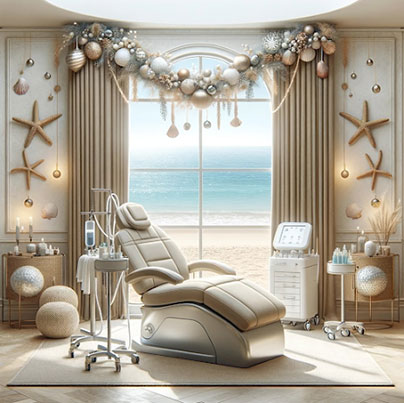
HydraFacial - December Special
Published on December 12, 2023 by Victoria Wood
Save 10% on HydraFacial at Ocean Clinic Marbella for a Radiant Holiday Glow. Unveiling the Ocean Clinic Marbella December Special: The Ultimate Hydrafacial Experience […]
Filed under: anti-aging face

Lipofilling Breast
Published on November 7, 2023 by Victoria Wood
Timeless Beauty with Lipofilling! The art of natural breast enhancement. Lipofilling utilizes your body’s own fat to sculpt and rejuvenate […]
Filed under: breast surgery lipofilling

Liquid Facelift
Published on November 3, 2023 by Victoria Wood
Liquid facelift at Ocean Clinic Marbella. We are pleased to offer you the opportunity to experience the rejuvenating benefits of a liquid facelift […]
Filed under: anti-aging face

Tummy Tightening
Published on October 27, 2023 by Victoria Wood
Tightening the abdomen surgically and non-surgically. A range of options to help you achieve that tighter tummy you’ve always dreamed of […]
Filed under: body contouring body

Atrophic Acne Scars
Published on October 25, 2023 by Victoria Wood
Treatment for Atrophic Acne Scars. Pilot study on the combination of microfocused ultrasound and dermal filler for treating atrophic acne scars, by Gabriela Casabona […]
Filed under: anti-aging face education

Perfect Lip Shape
Published on October 21, 2023 by Victoria Wood
The perfect lip shape according to science. Unlocking the Science Behind the Perfect Lip Shape: A Fresh Perspective on Beauty […]
Filed under: anti-aging lips
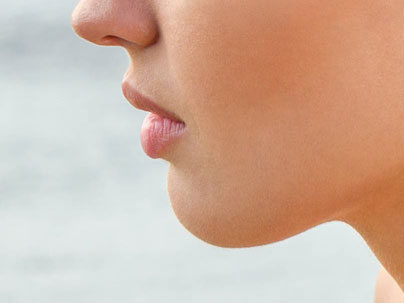
Chin Augmentation
Published on October 9, 2023 by Victoria Wood
Why people opt for chin augmentation. Various techniques Ocean Clinic offer to enhance your chin’s profile […]
Filed under: face surgery face

Undergo Plastic Surgery
Published on October 2, 2023 by Victoria Wood
The decision to undergo plastic surgery is deeply personal, and timing plays a significant role in achieving the best results […]
Filed under: plastic surgery

Non-invasive Skincare Treatment
Published on September 29, 2023 by Victoria Wood
Use the power of polynucleotides to prepare your skin. Unique ability to stimulate and rejuvenate the skin […]
Filed under: anti-aging treatments
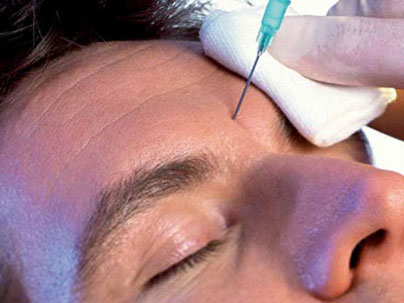
Skin Rejuvenation Treatments
Published on September 24, 2023 by Victoria Wood
Ocean Clinic’s skin rejuvenation treatments. Sun exposure can have short-term and long-term negative effects on our skin […]
Filed under: anti-aging treatments

Arm Lifts: What You Need to Know
Published on September 15, 2023 by Victoria Wood
Achieving Sculpted Arms with Arm Lifts. Say Goodbye to Bingo Wings or Bat Wings! […]
Filed under: body contouring arm lift

Non-Surgical Buttock Augmentation
Published on September 3, 2023 by Victoria Wood
Buttocks that exude firmness and youthfulness. Ocean Clinic Marbella, the fusion of expertise and artistry in buttock augmentation […]
Filed under: anti-aging body

Ultrasound-guided injections
Published on August 22, 2023 by Victoria Wood
Ultrasound technology has revolutionized the field of aesthetic medicine, offering valuable insights and enhanced precision during facial and lip injections […]
Filed under: anti-aging face

What is Forehead Reduction Surgery?
Published on August 20, 2023 by Victoria Wood
Reduces the height of the forehead and reposition the hairline closer to the eyebrows, resulting in a lifted forehead, brow, eyelids, and eyes for a more balanced facial appearance […]
Filed under: face surgery FAQ

What is a MACS Facelift?
Published on August 12, 2023 by Victoria Wood
The MACS lift is a revolutionary surgical procedure that targets signs of facial aging. MACS lift have a more defined and youthful appearance while maintaining the natural positioning of the facial hairline […]
Filed under: face surgery facelift FAQ

EMFace non-invasive treatment
Published on August 10, 2023 by Victoria Wood
Get your youthful face back with this groundbreaking non-invasive treatment! Using advanced electromagnetic energy to stimulate skin’s natural regenerative processes […]
Filed under: anti-aging face

Plastic Surgery School
Published on August 9, 2023 by Victoria Wood
Marbella International Plastic Surgery Summer School has developed into a prestigious, international event in the world of plastic surgery […]
Filed under: plastic surgery marbella education

Preoperative Facial Sculpting
Published on July 4, 2023 by Victoria Wood
How surgeons sculpt the face before a face lift. Sculpting and Molding the Face and Neck Prior to Face or Neck Lift Surgery […]
Filed under: face surgery facelift

Non-Invasive Ultrasound Treatment
Published on June 11, 2023 by Victoria Wood
Using Ultrasound to Improve Skin. The main goals of the rejuvenation process for the skin and subcutaneous tissue are neocollagenesis and volume restoration […]
Filed under: anti-aging ultherapy

The Forehead Bone
Published on June 3, 2023 by Victoria Wood
Does aging of the forehead bone affect our surgical/non surgical treatment choices? Study on the Aging of the Forehead Bone by Dr. Konstantin Frank […]
Filed under: anti-aging face education

Facial Bone Aging Process
Published on May 21, 2023 by Victoria Wood
Facial bones age too. How does this affect your facial aging process? Impacts of Facial Bone Aging on Skin and Facial Appearance […]
Filed under: anti-aging face

Male Facelift
Published on May 19, 2023 by Victoria Wood
From a surgical and aesthetic point of view, facelifts in males can differ from facelifts in females in several ways […]
Filed under: male surgery facelift

Décolletage Age Treatment
Published on May 17, 2023 by Victoria Wood
At Ocean Clinic, our specialized dermatologists evaluate the condition of the neck and décolletage and recommend suitable treatments to rejuvenate the skin […]
Filed under: anti-aging treatments

Hybrid Breast Augmentation
Published on May 12, 2023 by Victoria Wood
Hybrid breast augmentation is a breast enhancement surgery that combines the use of breast implants with fat grafting […]
Filed under: breast surgery breast augmentation
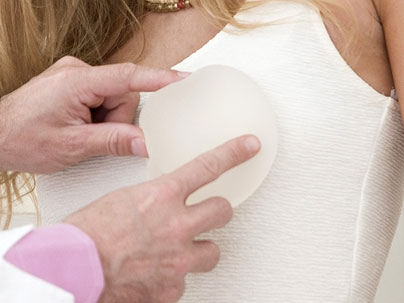
Breast Implant Placement
Published on May 9, 2023 by Victoria Wood
Deciding on where the implant will be placed is a delicate and vital factor in the overall outcome of a breast augmentation. […]
Filed under: breast surgery breast implants

Natural Looking Breast Implants
Published on April 30, 2023 by Victoria Wood
How to get the most natural looking breast implants? How can I make sure my new breasts look natural? […]
Filed under: breast surgery breast implants

Facial Expressions - Anti-aging Techniques
Published on April 19, 2023 by Victoria Wood
Why and how Anti-aging Aesthetic Techniques are Improving to Preserve our Facial Expressions […]
Filed under: anti-aging face

Stem Cell Fat Injection
Published on April 10, 2023 by Victoria Wood
Are stem cell enriched fat injections more effective than pure fat injections? What are stem cells and how do they work? […]
Filed under: anti-aging face stem cells

Facial Aging - prevent face from aging
Published on April 2, 2023 by Victoria Wood
How do you stop your face from aging? Is there anything we can do to prevent or slow down the process of facial aging? […]
Filed under: anti-aging face

Aesthetic Cosmetic Surgery 2023
Published on March 26, 2023 by Victoria Wood
What are the Global Projections for 2023 in Cosmetic Surgery? As Aesthetic Surgery becomes more socially accepted worldwide, which procedures will top trends? […]
Filed under: plastic surgery

Stem Cells in Cosmetic Surgery
Published on March 8, 2023 by Victoria Wood
How cosmetic surgery use stem cell technology. Cosmetic surgery is constantly evolving and one of the latest advancements is the use of stem cell technology […]
Filed under: plastic surgery stem cells

Nanofat microneedling a non-surgical facelift
Published on March 1, 2023 by Victoria Wood
What is Nanofat Microneedling? Nanofat microneedling provides a non-surgical facelift using your own existing body fat […]
Filed under: anti-aging face FAQ
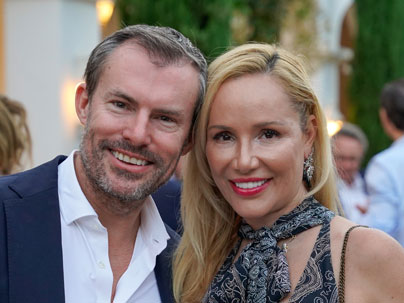
Anti-aging is a three-dimensional process
Published on February 27, 2023 by Victoria Wood
To achieve optimal results from fat grafting for facial rejuvenation, 3-dimensional ageing must be considered. Dr. Kai Kaye and Dr. Gabriela Casabona discuss […]
Filed under: anti-aging face education

Top Trends Plastic Surgery for Men
Published on February 14, 2023 by Victoria Wood
What are the Top Trends for men in plastic surgery for 2023? Men’s plastic surgery is still on the rise. New trends for men in 2023 […]
Filed under: male surgery
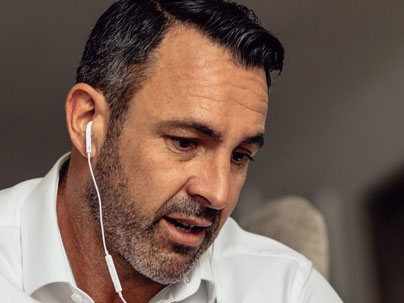
Laser Skin Treatment
Published on February 10, 2023 by Victoria Wood
One of the most popular treatments in the aesthetic department at this time of year is facial laser treatments […]
Filed under: anti-aging face

Plastic Surgery Bundling
Published on January 11, 2023 by Victoria Wood
What is ‘Bundling’; the new global trend in Plastic Surgery? What is the big new trend in plastic surgery for 2023? […]
Filed under: plastic surgery

Facelift Lite
Published on January 10, 2023 by Victoria Wood
Lighter facelifts for 40-somethings. What is a facelift-lite? Why forty-something is the new age for facelifts […]
Filed under: face surgery facelift

Non-Surgical Neck Rejuvenation
Published on January 7, 2023 by Gabriela Casabona
Gabriela Casabona shares her seven-step approach to treat skin laxity and restore volume to the neck […]
Filed under: anti-aging face education

Treating Stretch Marks
Published on December 13, 2022 by Victoria Wood
What really works for treating stretch marks? How do we diagnose the best treatment for stretch marks? […]
Filed under: anti-aging body
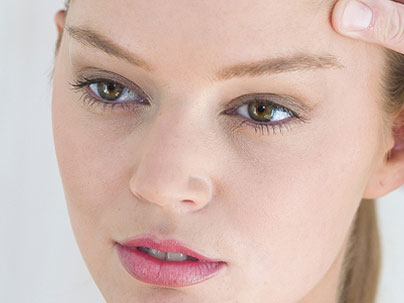
Nose correction - Rhinoplasty
Published on December 13, 2022 by Victoria Wood
What can and can’t be fixed with Rhinoplasty surgery. What types of rhinoplasty are there? […]
Filed under: face surgery rhinoplasty

When should I change my breast implants?
Published on November 20, 2022 by Victoria Wood
Common signs you should change your breast implants or need revisionary surgery. You have been experiencing pain or discomfort due to your implants […]
Filed under: breast surgery breast implants

Upper Blepharoplasty
Published on November 5, 2022 by Victoria Wood
Why Are Eyelid Surgery Patients getting younger? Upper Blepharoplasty, also known as an eyelid lift or eyelid surgery is one of the top five most performed cosmetic surgical procedures around the globe […]
Filed under: face surgery blepharoplasty

Combining Liposuction with other Procedures
Published on November 1, 2022 by Victoria Wood
What to combine with Liposuction for best body contouring results? Combination procedures are a major factor within Ocean Clinic’s patient consultation […]
Filed under: body contouring liposuction FAQ

Under Eye Bags - Blepharoplasty
Published on October 15, 2022 by Victoria Wood
Ocean Clinic can offer both surgical and non surgical solutions to improving the under eye area. […]
Filed under: face surgery blepharoplasty

Glycolic Acid or Hyaluronic Acid
Published on October 03, 2022 by Victoria Wood
Which Is Better For Anti-Aging? Glycolic acid to improve skin tone and texture. Hyaluronic acid a great source of hydration for the skin […]
Filed under: anti-aging treatments

Combining Plastic Surgery with Non Surgical Treatments
Published on September 21, 2022 by Victoria Wood
Combining Plastic Surgery with Non Surgical Treatments. Combining surgical and non-surgical procedures for optimal results. Combination treatments which offer great synergy and impressive results […]
Filed under: plastic surgery treatments
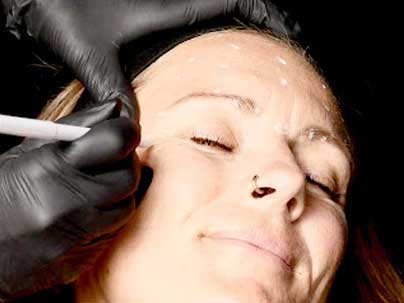
Highly Effective Aesthetic Treatment
Published on September 20, 2022 by Victoria Wood
HEAT - the latest concept in aesthetic medicine treatments and anti-aging cosmetics. Examples on how it is applied at Ocean Clinic, Marbella by Dr. Gabriela Casabona […]
Filed under: anti-aging treatments

Temporal Filler Effects
Published on August 17, 2022 by Victoria Wood
Temporal fillers can lift & volumize other regions of the face. Full-face effects of temporal volumizing and lifting techniques […]
Filed under: anti-aging injectables education

Glycolic Acid - Skin care
Published on August 11, 2022 by Victoria Wood
What is Glycolic Acid, and how can it help my skin? The properties, benefits and effects of glycolic acid as an element within skincare products, and what it could do for you […]
Filed under: anti-aging treatments
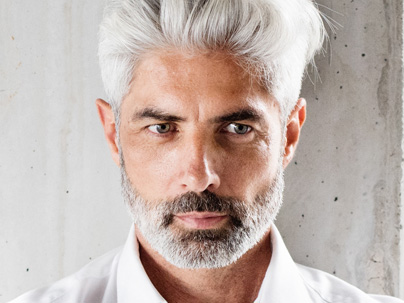
Brow Lift Surgical and Non-Surgical
Published on July 31, 2022 by Victoria Wood
You can restore your brow to a more youthful position using either surgical or non-surgical methods or a combination of the two […]
Filed under: face surgery face brow lift

Generational Differences in Aesthetics
Published on July 28, 2022 by Victoria Wood
Dr. Gabriela Casabona from Ocean Clinic Marbella discovered that, after studying over 1,500 people through three generations, all the generations had some things in common when it come to aesthetic, cosmetic treatments […]
Filed under: anti-aging injectables education

Plastic Surgery Education and Lectures
Published on July 2, 2022 by Ocean Clinic
Educational lectures and videos to convey our patients, aswell as plastic surgery residents, with critical information, history, background, theories, and equations in plastic, reconstructive and aesthetic surgery […]
Filed under: plastic surgery education

Breast Reconstruction Options
Published on July 1, 2022 by Victoria Wood
Breast reconstruction offers a variety of options for women who want to restore their figures. Breast Reconstruction after mastectomy with and without implants […]
Filed under: breast surgery breast reconstruction

Systematic Approach to Minimally Invasive Facial Rejuvenation
Published on June 29, 2022 by Victoria Wood
What is the importance of being systematic when approaching facial rejuvenation? Presentation made at the MIPSS meeting, Marbella 2022 by Dr Gabriela Casabona […]
Filed under: anti-aging face education

Nipple And Areola Reconstruction
Published on June 28, 2022 by Bel Booker
Nipple areola reconstruction methods: reconstruction using tissue or 3D micropigmentation. Reconstructed nipple areola complex […]
Filed under: breast surgery breast reconstruction

Team Building and Leadership
Published on June 23, 2022 by Victoria Wood
How to maintain a highly functional private practice. Dr Kaye, speaking on the topic of team building and leadership within a private practice and how to create, and maintain, a smooth running, successful business […]
Filed under: patients experience education

Plastic Surgery Recovery
Published on May 10, 2022 by Victoria Wood
Recovering from Plastic Surgery? To ensure you know exactly what to expect, Ocean Clinic Marbella has put together a guide covering all aspects of the recovery process […]
Filed under: plastic surgery aftercare

Nonsurgical Neck Lift
Published on May 6, 2022 by Victoria Wood
Rejuvenate the neck without surgery. Nonsurgical neck lift is quite often a combination of treatments used to treat an aging neck as they work in unison to create optimum results […]
Filed under: anti-aging treatments

Under-Eye Fillers
Published on April 23, 2022 by Victoria Wood
The G Point lift? The latest technique in under-eye fillers. A study, led by Gabriela Casabona MD based on where to best position facial soft-tissue fillers, was carried out to look into a new injection protocol […]
Filed under: anti-aging injectables education

Body contouring - Get beach ready now!
Published on April 14, 2022 by Victoria Wood
Top body contouring procedures to get beach-ready. Take a look at the best body sculpting treatments for that summer body and get beach-ready now! […]
Filed under: body contouring

Plastic Surgery Trends Marbella 2022
Published on April 12, 2022 by Victoria Wood
Plastic Surgery Trends at Ocean Clinic Marbella in 2022. Most popular plastic and cosmetic surgeries performed since January 2022 at Ocean Clinic in Marbella […]
Filed under: plastic surgery

Injectable Filler Procedures
Published on March 31, 2022 by Victoria Wood
Do facial ligaments affect injectable filler procedures? Lifting vs Volumising - A Study Led by Gabriela Casabona MD, Ocean Clinic […]
Filed under: anti-aging injectables education
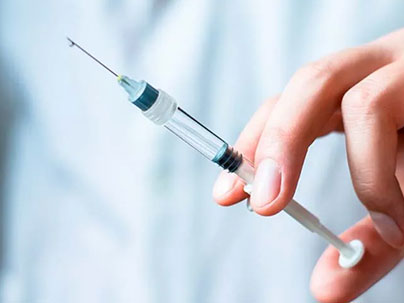
Can injectables reduce anxiety?
Published on March 22, 2022 by Victoria Wood
Recent study claims neuromodulator injections could reduce anxiety by up to 72%. Regardless of where the injection site was, anxiety symptoms were significantly reduced […]
Filed under: anti-aging injectables education

Brazilian Butt Lift - FAQs
Published on March 15, 2022 by Victoria Wood
Should I get a Brazilian Butt Lift? Interested in buttock augmentation? We approach all the questions surrounding this popular plastic surgery procedure […]
Filed under: body contouring buttock augmentation FAQ
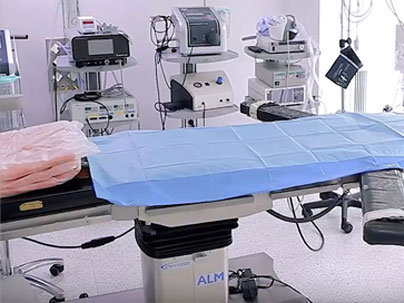
Local anaesthesia in plastic surgery
Published on March 9, 2022 by Victoria Wood
Why local anaesthesia is trending in plastic surgery over general anaesthesia […]
Filed under: patients experience

Men and Plastic Surgery
Published on March 2, 2022 by Victoria Wood
Top Male Cosmetic Procedures for 2022. The increase in male cosmetic treatments continues as more and more men are leaning towards both aesthetic and surgical procedures […]
Filed under: male surgery

Lip flip - nonsurgical treatment
Published on February 21, 2022 by Victoria Wood
New option in lip augmentation, similarly to using fillers, involves injectables being placed into the lip to create a fuller appearance […]
Filed under: anti-aging lips FAQ

Natural Looking Breast Augmentation
Published on February 18, 2022 by Victoria Wood
Extreme change in breast size has now become less in demand as more and more women going for the most natural look […]
Filed under: breast surgery breast augmentation

Types of Skin Treatments
Published on February 1, 2022 by Victoria Wood
How the young people of today are using prevention techniques to maintain their youthful looks. The latest in aesthetic (surgery-free) treatments to stay looking your best […]
Filed under: anti-aging treatments

Top Cosmetic Procedures for 2022
Published on January 27, 2022 by Victoria Wood
Which cosmetic procedures are set to be trending this year according to top surgeons worldwide? An in-depth look at the rising trends in aesthetic and beauty medicine for 2022 […]
Filed under: plastic surgery

Décolletage treatment options
Published on January 20, 2022 by Victoria Wood
Treatments to improve the appearance of the décolletage area.The décolletage gets a lot of sun exposure and is subsequently prone to wrinkling, sagging and discolouration […]
Filed under: anti-aging treatments

Liposuction Recovery
Published on January 15, 2022 by Victoria Wood
Recovering from Liposuction - all you need to know. Liposuction a straightforward procedure with fairly low recovery time but it still involves major surgery […]
Filed under: body contouring liposuction aftercare

Christmas Greetings
Published on December 15, 2021 by Bel Booker
We wish you a gorgeous Christmas and a beautiful New Year from everyone at Ocean Clinic, we’ll see you in 2022! […]
Filed under: patients experience

Common Treatments for Men
Published on December 1, 2021 by Bel Booker
Is it time for a ‘daddy do-over’?! Discover treatments for men in their 40s and 50s […]
Filed under: male surgery

Reconstructive Plastic Surgery
Published on November 23, 2021 by Bel Booker
Ocean Clinic’s plastic surgeons have a wealth of experience in reconstructive plastic surgery. Examples, specialists and types in reconstructive surgery […]
Filed under: plastic surgery

Flat Buttocks Treatments
Published on November 15, 2021 by Bel Booker
Treatments for flat buttocks. What causes flat buttocks? There are a number of things you can do to improve the shape of your bottom […]
Filed under: body contouring buttock augmentation

Lip augmentation treatments
Published on November 4, 2021 by Bel Booker
Lip augmentation, it’s easy to augment the lips to make them more shapely and better proportioned for your face. Decide which might be the best for you […]
Filed under: anti-aging lips

Daddy Do-Over Male Plastic Surgery
Published on October 29, 2021 by Bel Booker
A ‘daddy do-over’ is a suite of treatments especially for men in their forties and fifties, designed to make them look and feel 10 years younger […]
Filed under: male surgery

Rhinoplasty Myths
Published on October 28, 2021 by Bel Booker
5 Myths about rhinoplasty. Rhinoplasty can be a life-changing surgery but many people put it off due to these 5 common myths […]
Filed under: face surgery rhinoplasty

Disinfection Process
Published on October 22, 2021 by Ocean Clinic
UVC Light Disinfection with COMVAT DUO3 at Ocean Clinic Marbella. Empower disinfection processes in times of COVID-19 […]
Filed under: patients experience covid-19

Am I a Good Candidate for a Tummy Tuck?
Published on October 7, 2021 by Bel Booker
Are you a good candidate for a tummy tuck? Here are 5 factors to consider […]
Filed under: body contouring tummy tuck

Best treatments for buttocks
Published on September 27, 2021 by Bel Booker
What are the best treatments for flat buttocks? […]
Filed under: body contouring buttock augmentation

What breast augmentation looks like
Published on September 06, 2021 by Bel Booker
What do different types of breast augmentations look like? Teardrop, round and high profile breast implants […]
Filed under: breast surgery breast augmentation

3D Printed Breast Implants - Breast Augmentation
Published on August 30, 2021 by Bel Booker
Lots of women dream about having larger, fuller breasts, but not everyone likes the idea of breast implants […]
Filed under: breast surgery breast implants breast augmentation

Banish Eye Bags - Blepharoplasty
Published on August 29, 2021 by Bel Booker
Eye bags can be one of the most aging facial features and detract from an otherwise attractive appearance […]
Filed under: face surgery blepharoplasty

Belly button surgery
Published on August 18, 2021 by Bel Booker
Do you wish you could change the way your belly button looks? You can! Belly button surgery can be performed by itself or as part of a tummy tuck […]
Filed under: body contouring tummy tuck

Should I Get Plastic Surgery?
Published on August 12, 2021 by Bel Booker
Committing to plastic surgery absolutely shouldn’t be rushed. Patients tell us they wished they’d done it earlier. The decision to get plastic surgery is a big one […]
Filed under: plastic surgery

Argon Plasma-Driven RF
Published on August 03, 2021 by Bel Booker
A New Advancement in Body Contouring. New technology argon plasma-driven radiofrequency as part of body contouring. Typically after liposuction, patients will be left with some skin laxity […]
Filed under: body contouring liposuction
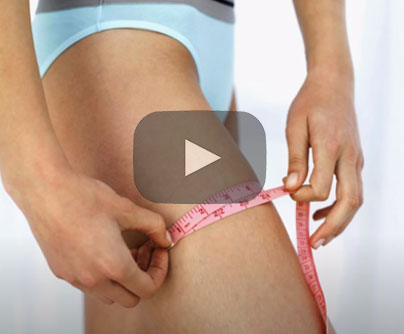
Thigh Lift Surgery
Published on July 20, 2021 by Bel Booker
Are you unhappy with your thighs? Learn about thigh lift surgery! A thigh lift can make your thighs thinner, more shapely and toned […]
Filed under: body contouring thigh lift

Best Anti-Aging Treatments
Published on July 19, 2021 by Bel Booker
Top 5 Treatments to Make You Look Younger. Five treatments that will turn back the clock and help you feel vibrant once more […]
Filed under: anti-aging treatments

Breast Uplift - 10 Things You Need To Know
Published on July 05, 2021 by Bel Booker
Thinking about having a breast lift? Here are 10 facts about the procedure that will help you to make up your mind […]
Filed under: breast surgery breast uplift

Tummy Tuck - Who is a good candidate?
Published on June 28, 2021 by Bel Booker
If a tighter, more toned tummy is something that interests you, you might be wondering if a tummy tuck (abdominoplasty) is suitable for you? […]
Filed under: body contouring tummy tuck FAQ

OC Group in Marbella, Madrid & Zurich
Published on June 17, 2021 by Bel Booker
Ocean Clinic Group has clinics in Marbella, Madrid and Zurich. All our clinics offer comfort, discretion and the very highest surgical standards […]
Filed under: patients experience marbella madrid
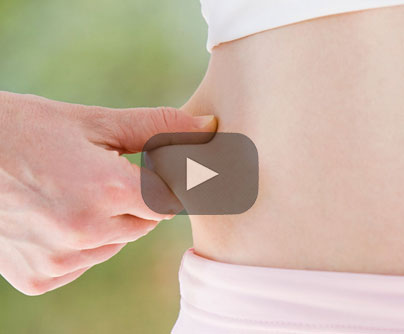
Liposuction FAQs - Body contouring
Published on June 14, 2021 by Bel Booker
Thinking about liposuction? Here are some frequently asked questions. Am I a good candidate for liposuction? Liposuction permanently removes fat cells […]
Filed under: body contouring liposuction FAQ

Rhinoplasty - Nasal tip surgery
Published on May 18, 2021 by Bel Booker
Rhinoplasty doesn’t always involve the nasal bones. Nasal tip surgery focuses on reshaping just the nose cartilage. Nasal tip surgery deliver great aesthetic results, but it also has a quicker recovery time […]
Filed under: face surgery rhinoplasty FAQ

Summer body treatments
Published on May 10, 2021 by Bel Booker
The State of Alarm has ended… it’s back to the beaches and pool clubs! Want to get your body summer ready in a flash? Here are 4 non-surgical quick fixes […]
Filed under: anti-aging body

High Intensity Focused Ultrasound - HIFU
Published on May 6, 2021 by Bel Booker
HIFU stands for ‘High Intensity Focused Ultrasound’ and it’s a treatment that uses ultrasound to lift and tighten the skin on the face. Interested to know how it works? […]
Filed under: anti-aging ultherapy FAQ

Scrotal Lift - Scrotoplasty
Published on April 26, 2021 by Bel Booker
Men, do you experience discomfort down below when playing sports or cycling? Excess scrotal skin can cause chafing, and it can be an aesthetic concern too […]
Filed under: male surgery

Non Surgical Body Treatments
Published on April 13, 2021 by Bel Booker
4 of the best summer body treatments. We’re going to lay out the 4 best non-surgical treatments for getting beach body confident. Coolsculpting is a non-surgical treatment that reduces […]
Filed under: anti-aging body

Aftercare: What Happens After Your Surgery?
Published on March 24, 2021 by Bel Booker
At Ocean Clinic, we believe how our patients are treated after their surgery is just as important as before. Our aftercare programme starts the moment you leave the operating theatre […]
Filed under: patients experience aftercare

Correcting asymmetrical breasts
Published on March 19, 2021 by Bel Booker
Most women have one breast bigger than the other… but for some women the difference is more noticeable. If you feel self-conscious about uneven breasts, there are options […]
Filed under: breast surgery

Gynecomastia - Male Breast Reduction
Published on March 18, 2021 by Bel Booker
Man boobs can be embarrassing. Male breast reduction surgery takes less than an hour and you can go home the same day […]
Filed under: male surgery body contouring gynecomastia

Plastic Surgery - Why Now is A Great Time for
Published on March 02, 2021 by Bel Booker
Coronavirus has put the brakes on our social lives. But it’s also the perfect time to undergo plastic surgery. Read on to discover the 5 reasons why […]
Filed under: plastic surgery covid-19

Fakelift - Non Surgical Facelift
Published on February 18, 2021 by Bel Booker
A combination of non-invasive treatments, designed to simulate results that were previously only achievable through surgical procedures. A fantastic alternative to facelift […]
Filed under: anti-aging face FAQ

Labiaplasty surgery
Published on February 13, 2021 by Bel Booker
Labiaplasty has extremely high satisfaction rates and low complication rates. Vaginas come in all shapes and sizes, but larger vaginal lips can cause issues […]
Filed under: body contouring intimate surgery

Profiloplasty - Combination of Procedures
Published on February 04, 2021 by Bel Booker
Profiloplasty is a plastic surgery procedure to balance the profile. It aims to make sure the forehead, nose, cheekbones and chin are all in proportion […]
Filed under: face surgery profiloplasty rhinoplasty

Scar correction - Everything You Need to Know
Published on January 26, 2021 by Bel Booker
Scar correction surgery can often work wonders in reducing the size of a scar, smoothing out the texture and making it much neater and less noticeable […]
Filed under: body contouring scars FAQ

Breast Implants Removed
Published on January 19, 2021 by Bel Booker
Are you thinking about having your breast implants removed? Perhaps your implants are old or causing you problems? […]
Filed under: breast surgery breast implants breast augmentation

The 7 Biggest Plastic Surgery Trends for 2021
Published on January 13, 2021 by Bel Booker
Let’s take a look at the top cosmetic concerns right now and the 7 key plastic surgery trends for 2021 […]
Filed under: plastic surgery covid-19

Liposuction for Men - 10 Facts
Published on December 15, 2020 by Bel Booker
Liposuction is a fantastic tool for sculpting the body and bringing out the best in your physique - whether you’re a woman or a man […]
Filed under: male surgery body contouring liposuction

Injectables For Men - Your Questions Answered
Published on December 3, 2020 by Bel Booker
Should Men Get Injectables? We’ll explore the benefits of injectables for men and cover the concerns men frequently have about this treatment […]
Filed under: male surgery anti-aging injectables FAQ

Breast augmentation - Breast implant choices
Published on November 24, 2020 by Bel Booker
Thinking about breast implants? Our board-certified plastic surgeons will help you to make 5 important choices […]
Filed under: breast surgery breast implants breast augmentation

Thigh Lift and Knee Rejuvenation
Published on November 18, 2020 by Bel Booker
Get a Total Leg Makeover with a Thigh Lift and Knee Rejuvenation. Do you have great legs? Did you use to? Legs can change quite a lot as we grow older - especially for women […]
Filed under: body contouring thigh lift FAQ
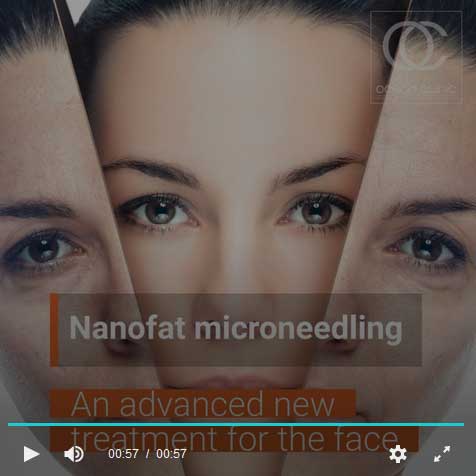
Nanofat Microneedling Facelift
Published on November 5, 2020 by Bel Booker
Nanofat microneedling facelift - an advanced new treatment for the face. It’s a highly effective way to rejuvenate ageing, blemished and sun-damaged skin […]
Filed under: face surgery facelift

Head Nurse Louise Taylor - Facts
Published on October 26, 2020 by Bel Booker
8 Facts about Ocean Clinic’s Head Nurse Louise Taylor. Louise manages the in-house operating theatre at Ocean Clinic Marbella […]
Filed under: patients experience

Best Medical Spa in Marbella
Published on October 23, 2020 by Bel Booker
Every treatment of our Medical Spa is a unique and personal occasion created from our spa menu to improve your skin […]
Filed under: anti-aging marbella

Micro Fat Transfer - Facial Fat Grafting
Published on October 8, 2020 by Bel Booker
Micro fat transfer, a non-surgical facelift, offers a real alternative for facial rejuvenation without the need for any invasive surgery, and it’s suitable for both men and women […]
Filed under: face surgery facelift
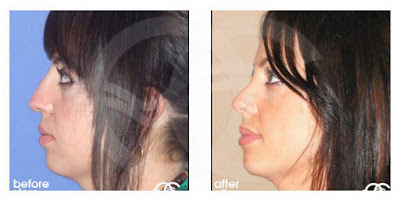
Rhinoplasty - learn about your options
Published on September 25, 2020 by Bel Booker
Unhappy with Your Nose? If you don’t like the way your nose looks, you’ve probably spent a long time wondering if you should do something about it […]
Filed under: face surgery rhinoplasty

What is Composite Breast Augmentation?
Published on September 17, 2020 by Bel Booker
Composite breast augmentation is a procedure that combines traditional breast augmentation implants with breast augmentation fat transfer. It’s carried out to increase the size of the breasts and/or to enhance their shape […]
Filed under: breast surgery breast augmentation

Breast Surgery - Implants or Uplift?
Published on September 16, 2020 by Bel Booker
Thinking of breast surgery? Understand if you need breast augmentation with implants or an breast uplift - or both […]
Filed under: breast surgery breast implants breast uplift

Motiva Breast Implants - Breast Augmentation
Published on August 26, 2020 by Dr Kai O Kaye
Learn about Motiva® breast implants. Have you ever heard of Ergonomix® implants, for example? These implants are particularly suitable for active women and athletes […]
Filed under: breast surgery breast implants breast augmentation

Lateral Brow Lift and Upper Blepharoplasty
Published on August 24, 2020 by Bel Booker
Plastic surgeon Dr Felix Paprottka loves restoring drooping brows to their youthful position. He explains how he does it using a combination of procedures […]
Filed under: face surgery blepharoplasty brow lift

Under Eye Filler - Aesthetic Medicine
Published on August 18, 2020 by Bel Booker
Are you a good candidate for under eye filler? Filler can be used to treat both hollows and bags. For hollow eyes, filler is used to restore lost volume […]
Filed under: anti-aging injectables

Plastic Surgeon Dr Kai Kaye - Facts
Published on August 4, 2020 by Bel Booker
8 Facts about Ocean Clinic Founder Dr Kai Kaye, registered plastic surgeon in Spain, Germany and the UK, named “Best Plastic Surgeon - Marbella” […]
Filed under: plastic surgeon

Implants or Uplift? Test Your Breasts at Home!
Published on August 24, 2016 by Bel Booker
Are you unhappy with the appearance of your breasts but unsure what surgery you require? Ocean Clinic has developed a do-it-yourself test to help you identify where the problem lies […]
Filed under: breast surgery breast implants breast uplift

Liposuction – Everything You Need to Know
Published on July 1, 2016 by Bel Booker
Do you feel your figure is spoiled by a particular problem area? Liposuction might be the solution you’re looking for […]
Filed under: body contouring liposuction FAQ

Stretch Mark Treatment - a new innovation in aesthetic medicine
Published on July 13, 2020 by Bel Booker
Ocean Clinic is proud to present a brand new treatment for stretch marks, developed in-house by Dr Gabriela Casabona. The treatment combines Venus Viva with Dermapen 4, two non-invasive, pain-free treatments […]
Filed under: anti-aging body

Anesthetist Dr Raimundo Escudero - Facts
Published on July 2, 2020 by Bel Booker
8 Facts about Dr Raimundo Escudero, Ocean Clinic’s in-house Anesthetist, experienced in intensive care, paediatrics, cardiology and chronic pain […]
Filed under: patients experience

Earlobe Rejuvenation Surgery for Ageing Ears
Published on June 29, 2020 by Bel Booker
When we think of ageing we don’t normally think about ears but it’s a part of the body that also suffers from the effect of time. Ageing earlobes can become loose, saggy and wrinkled […]
Filed under: face surgery otoplasty

Physiotherapist Silvia Pino - Facts
Published on June 11, 2020 by Bel Booker
8 Facts about Ocean Clinic’s Physiotherapist Silvia Pino, specialised in spinal and neurological problems, trained in dry needling […]
Filed under: patients experience aftercare

Why We Love... Breast Augmentation
Published on June 22, 2020 by Bel Booker
Ocean Clinic’s doctors, nurses and specialists tell us about their favourite procedures. First up, it’s Head Surgical Nurse Louise Taylor talking about breast augmentation […]
Filed under: breast surgery breast implants breast augmentation

What Type of Breast Implants Should I Have?
Published on June 18, 2020 by Bel Booker
Such is the range of breast implants on the market today, it can be difficult to work out which ones are the right ones for you. To help you understand the attributes of the different types Ocean Clinic Marbella has created a quiz […]
Filed under: breast surgery breast implants breast augmentation

Plastic Surgeon Dr Felix Paprottka - Facts
Published on June 11, 2020 by Bel Booker
8 Facts about Plastic Surgeon Dr Felix Paprottka, board registered plastic surgeon in Germany and Spain, Vice President of the European Plastic Surgery Research Council […]
Filed under: plastic surgeon

If your teen wants plastic surgery
Published on June 08, 2020 by Bel Booker
Growing up in an age of selfies and social media means there’s more pressure on today’s teenagers to “look good” than ever before. This article will help you discuss the subject with them […]
Filed under: plastic surgery FAQ
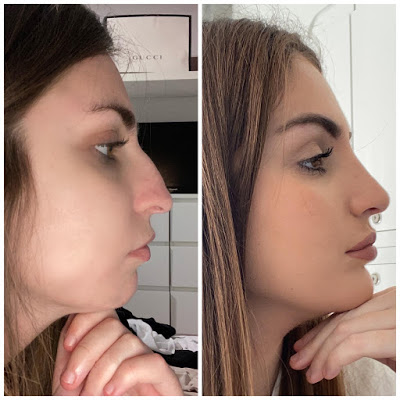
What’s it Like to Have Profiloplasty (Rhinoplasty and a Chin Implant)?
Published on June 01, 2020 by Bel Booker
Profiloplasty aims to balance the profile of someone’s face by making sure the forehead, nose, cheekbones and chin are all in proportion […]
Filed under: face surgery profiloplasty rhinoplasty

COVID-19 Ocean Clinic resumes clinical activity
Published on May 04, 2020 by Ocean Clinic
Ocean Clinic resumes clinical activity under new post COVID-19 protocols. We are looking forward to seeing you here again […]
Filed under: patients experience covid-19

COVID-19 and Your Plastic Surgery
Published on April 02, 2020 by Bel Booker
If you have plastic surgery scheduled for the coming months or were planning to undergo a procedure, you’ll no doubt have questions about the current situation with COVID-19 […]
Filed under: plastic surgery covid-19 FAQ

Ocean Clinic During Coronavirus
Published on March 24, 2020 by Bel Booker
Ocean Clinic’s top priority is to keep our patients, staff and their families safe at this difficult time. The Ocean Clinic team remains available for emergencies, for help and advice via phone, email or video call […]
Filed under: patients experience covid-19
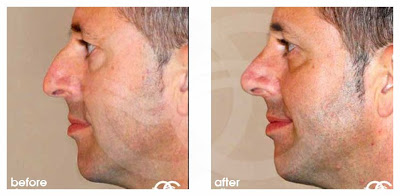
How to Fix the Bump in Your Nose
Published on February 18, 2020 by Bel Booker
Dorsal hump removal is one of the most common requests at Ocean Clinic. Patients often want to know if it’s possible to fix the bump in their nose without surgery. People can be reluctant to have rhinoplasty surgery because they think it’s a painful and complicated surgery. But what are the alternatives? […]
Filed under: face surgery rhinoplasty

Cosmetic and Plastic Surgery Trends
Published on January 17, 2020 by Bel Booker
Ocean Clinic’s Dr Kaye Predicts 2020’s Biggest Cosmetic and Plastic Surgery Trends. Every year, Dr Kaye attends many major cosmetic surgery conferences around the globe - as well as organising the MIPSS Plastic Surgery School - so he always has his finger on the pulse of the next big thing. Here are his top 5 cosmetic and plastic surgery trends for 2020 […]
Filed under: plastic surgery
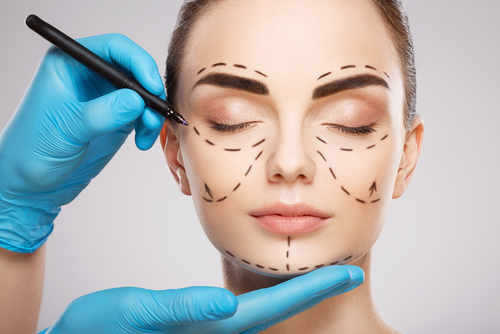
Getting A Facelift in Your Forties
Published on January 3, 2020 by Bel Booker
Facelift surgery is often associated with men and women in their sixties, but this is mostly because patients at this age show the most dramatic transformation […]
Filed under: face surgery facelift

10 Things You Only Know if You’ve had Breast Implants
Published on November 1, 2019 by Bel Booker
If you’ve always dreamed of having bigger breasts, then you’ll know a breast augmentation could be a life-changing operation. You may have read or heard a lot about the procedure, but the guides won’t tell you everything. Here are some of the things you usually only find out once you’ve got your new assets! […]
Filed under: breast surgery breast implants breast augmentation

Injectables - Anti-aging Treatment
Published on September 18, 2019 by Bel Booker
Muscle relaxaing injectables and fillers offer a quick fix for wrinkles and restoring volume to lips and cheeks, but did you know they also have a host of other applications for facial rejuvenation? […]
Filed under: anti-aging treatments

Ocean Clinic Group - Our Reviews Speak for Themselves
Published on July 29, 2019 by Bel Booker
At Ocean Clinic, we aim to educate people about different plastic surgery treatments through our articles and videos. But often the best way to make up your mind if you’re thinking about undergoing surgery is to hear from patients who have already done so. […]
Filed under: patients experience

Marbella vs Madrid - Which Would You Choose?
Published on June 26, 2019 by Bel Booker
Ocean Clinic patients now have two fantastic locations to choose from - we have world-class facilities in Marbella on the Costa del Sol and in Madrid, Spain’s capital. Not sure where you’d rather travel to for treatment? […]
Filed under: patients experience marbella madrid

Lipoedema: The Condition You May Not Realise You Have and How to Treat it
Published on June 14, 2019 by Bel Booker
Lipoedema, a condition that causes abnormal swelling and fat deposits on women's legs, is thought to affect around 11% of females across the world. But the real number could be much higher. […]
Filed under: body contouring liposuction

Varicose Veins
Published on January 30, 2019 by Bel Booker
Banish Unsightly Varicose Veins with a Simple Procedure […]
Filed under: anti-aging treatments FAQ

Plastic Surgery Insurance: What Does it Cover?
Published on November 27, 2018 by Bel Booker
Are you deterred from having plastic surgery because of fears of complications? Perhaps you are put off from travelling to Spain for surgery from your home country in case you require follow-up treatment? […]
Filed under: patients experience

Celebrating 10 years of Surgical Excellence, Art and Science
Published on October 29, 2018 by Bel Booker
Ocean Clinic has turned ten! To celebrate this milestone anniversary, we’re taking a look back at some of the many highlights of the last decade. Ocean Clinic was founded in October 2008 by Doctor Kai Kaye following a move to Spain from his native Germany. […]
Filed under: patients experience

What Questions Should I Ask at My Nose Job Consultation?
Published on October 19, 2018 by Bel Booker
Taking the plunge and finally booking a consultation for a nose job is both exciting and daunting. You’re bound to be a little nervous on the day, so how can you make sure you get all the important information you need? […]
Filed under: face surgery rhinoplasty FAQ

The Science Breakthrough that Promises to Reverse Wrinkles
Published on October 11, 2018 by Bel Booker
Something amazing happened in the world of science recently and it means doctors might soon be able to reverse the effects of ageing, rather than just repairing them. […]
Filed under: anti-aging face

Arm Lift: Your Questions Answered
Published on September 28, 2018 by Bel Booker
Saggy upper arms are something that commonly occur with age, but they can also be caused by weight loss. Read on for answers to our top 10 most FAQ […]
Filed under: body contouring arm lift FAQ

10 Myths About Buttock Augmentation Surgery
Published on April 25, 2018 by Bel Booker
Big booties are big news, with a more voluptuous female figure back in vogue. The trend has led to an increased interest in buttock augmentation surgery […]
Filed under: body contouring buttock augmentation

All-Natural Penis Enhancement
Published on April 19, 2018 by Bel Booker
Would you like a bigger penis? Nearly half of men would. If you’re one of them, the good news is you can get penis enlargement without any invasive surgery […]
Filed under: male surgery intimate surgery FAQ
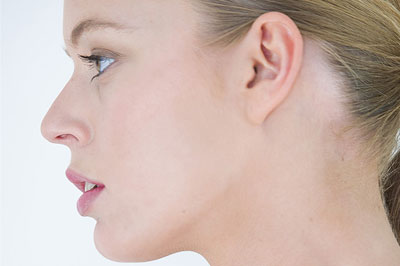
Will A Nose Job Change Your Life?
Published on April 13, 2018 by Bel Booker
Rhinoplasty surgery, there are various considerations; from the cost of the procedure, perceived pain and necessary downtime, to whether you’ll be happy with the end result […]
Filed under: face surgery rhinoplasty

Mommy Makeover - combined surgeries
Published on February 5, 2018 by Bel Booker
The trend is being led by the so-called “mommy makeover” - a suite of surgeries, which include a tummy tuck, breast augmentation, breast lift and liposuction […]
Filed under: body contouring mommy makeover

What Questions Should You Ask Your Plastic Surgeon?
Published on January 21, 2018 by Bel Booker
You might be considering some cosmetic surgery, if you are, it’s important to do your homework and choose your surgeon carefully. To help you, we’ve put together a checklist of top questions to ask at your consultation […]
Filed under: plastic surgeon FAQ

Aftercare Lymphatic Drainage
Published on February 9, 2017 by Ocean Clinic
Aftercare part of the entire cosmetic surgery procedure. Lymphatic drainage sessions are an essential part of our aftercare. Certified therapists will help you with your recuperation […]
Filed under: patients experience aftercare
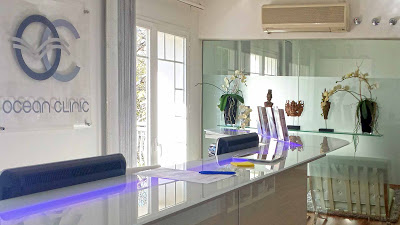
Considering Cosmetic Surgery Abroad? Your Questions Answered
Published on May 12, 2016 by Bel Booker
Ocean Clinic Marbella not only treats many local expat patients, we also frequently have people travel from the UK and many other countries to undergo treatment. That’s because they can make significant savings here in Spain without sacrificing the standard of care […]
Filed under: patients experience marbella FAQ

Banish ‘Bingo Wings’ with an Arm Lift
Published on April 18, 2016 by Bel Booker
Sagging underarms affect many of us as we age and skin loses its elasticity. The condition is a particular problem for those who have lost significant amounts of weight or have experienced weight fluctuation over the years […]
Filed under: body contouring arm lift

Cosmetic Treatments for Men
Published on October 29, 2015 by Bel Booker
Men are increasingly starting to take better care of their appearance, and why shouldn’t they? […]
Filed under: male surgery

Mommy Makeover - complaints after pregnancy
Published on June 23, 2015 by Bel Booker
Pregnancy and birth takes its toll on the body. Mommy makeover includes a combination of treatments to rejuvenate the body […]
Filed under: body contouring mommy makeover
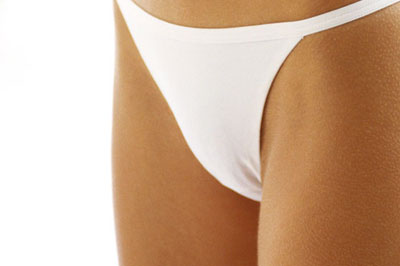
Vaginal Labiaplasty Explained – Your Questions Answered
Published on May 8, 2015 by Bel Booker
What exactly is labiaplasty and why are more women seeking out this treatment? Vaginal labiaplasty is rapidly growing in popularity […]
Filed under: body contouring intimate surgery FAQ